“I am committed to patients and families and want them to know we’re doing everything we can to overcome the barriers.”
Lee Helman, MD, Director, The Osteosarcoma Institute
In August, Lee Helman, MD, the Osteosarcoma Institute’s Director and a leader in the field for several decades, announced OSI’s 2021 grant selections. The winning projects feature new technologies, and focus on a relatively short timeframe of being able to be tested in a clinical study.
“One of them actually is a clinical study,” Dr. Helman says, “but the other two are using clinical materials or doing something in a model with the clear aim of testing these out in patients with recurrent osteosarcoma. So, there’s a hopefully short timeline from the findings of the preclinical studies to moving and testing these into patients that desperately need new therapies.”
Dr. Helman shared with The Frontline some background on the winning projects.

Measuring the phenotypic effects of novel targeted therapies with osteosarcoma circulating tumor cells.
Submitted by Brian Crompton, MD
This project isolates circulating tumor cells found in the blood. Researchers have already been looking at circulating DNA in the blood in osteosarcoma patients; it’s called circulating tumor DNA or ctDNA. But what we haven’t yet seen is protein because protein is made in the cell. This project posits that if you can look at circulating tumor cells, you can look at the DNA — and the protein . Being able to do this may help us better understand the changes in the DNA affect changes in proteins. It’s a really different concept; they’re both important, but they complement each other. Dr. Crompton is already leveraging a pre-existing NIH grant, where he’s looking at the ctDNA. So, we hope this will provide a full much fuller picture. This project was selected for co-funding by OSI’s family fund partners, Lizzy’s Walk of Faith Foundation through Lizzy’s Osteosarcoma Science Fund.
Nanoparticle vaccines targeting metastatic osteosarcoma.
Submitted by Elias Sayour, MD, PhD
This project takes an mRNA vaccine approach, which is an innovative strategy to stimulate the immune system. Two successful vaccines against COVID-19 — Pfizer and Moderna — utilize mRNAs, marking the first time such a vaccine has been successful in humans. So there’s a real possibility this is going to open up the ability to use this approach as a cancer vaccine. This project will investigate extracting the mRNA from the tumor, encapsulating it in a nanoparticle, and delivering it to the patient as a vaccine, much like the COVID vaccines. The mRNA will then be translated into a protein in the patient and, we hope, that protein will be seen by the immune system, which will develop an anti-tumor response to it. For reasons not completely understood, the immune system doesn’t normally recognize osteosarcoma or cancer in general as an invader. We hope, however, that this approach could potentially overcome that. More information on the institution conducting this study will be announced soon.
NK Immunotherapy and Osteosarcoma.
Submitted by Daniel A. Vallera, PhD
Dr. Vallera aims to develop an approach to direct NK cells — or “natural killer cells” —and using genetic manipulation of these NK cells that using the molecules to recognize the OS cells . These Trispecific Killer cell Engagers or TRiKEs will hopefully activate immune system to recognize osteosarcoma, and the plan is to start with translational research utilizing dogs so we will get to see some potential efficacy, but, more importantly, make sure it’s safe and doesn’t cause toxicity. NK cells, if they recognize osteosarcoma cells, hopefully will bring in other immune cells and amplify the immune system’s ability to recognize these tumor cells. So far, we have been incredibly effective with CAR-T cell therapy in pediatric leukemias and some other diseases, but the T cells have to come from the patient — and then they need to be manufactured in what is usually a 14-day process. But if we can make TRiKE NK cells work, they can come off the shelf because NK cells don’t attack the patient’s own normal cells. So, not only could this be more effective, we also wouldn’t have to wait 14 days to develop it. That’s the future.
Each grant’s Principal Investigator will provide a progress report every six months to be shared with the OSI board, and the grants’ results of will be available to the public. Dr. Helman says transparency is of the utmost importance.
“Everything at the OSI goes to really push toward improving the outcome of patients with osteosarcoma,” he says, “and we hold everyone we support accountable.”
Dr. Helman has been treating kids with osteosarcoma since 1983, and he is bullish on these projects and where they might lead.
“I feel it very strongly how desperately we need to continue to make progress,” he says. “I am committed to patients and families and want them to know we’re doing everything we can to overcome the barriers.”
The Osteosarcoma Institute is opening their 2022 grant cycle on September 7, 2021. For more information on OSI’s grant program please click here. If you would like to inquire about “out-of-cycle” grant funding, please click here.
If you are a patient, family or foundation interested in co-funding research with the Osteosarcoma Institute, please email giving@osinst.org.
